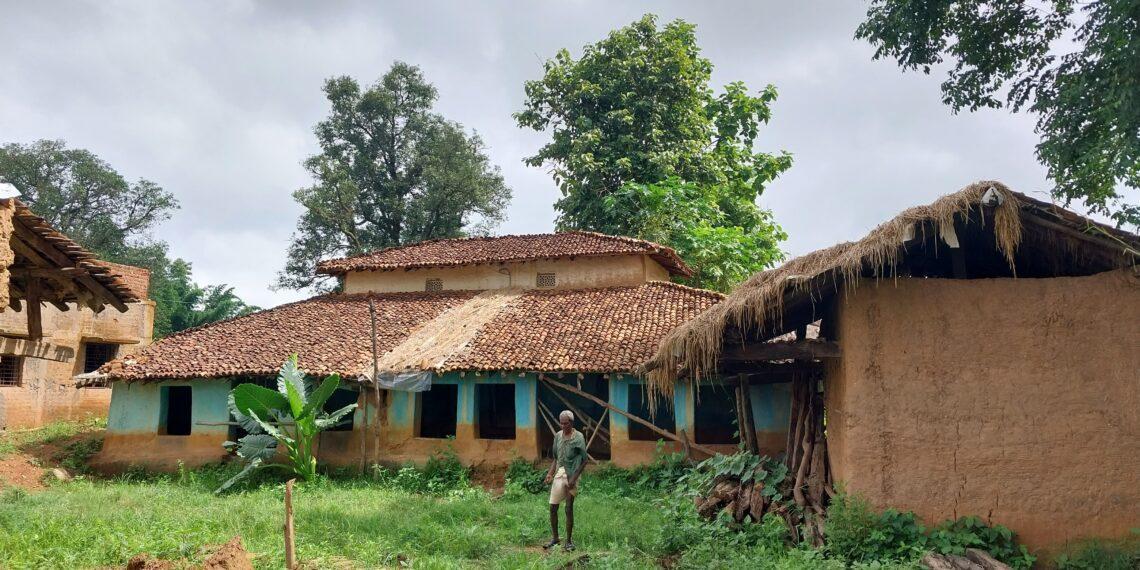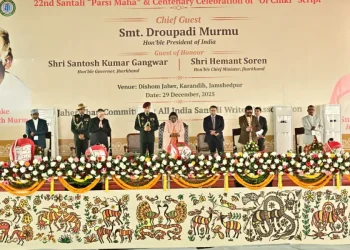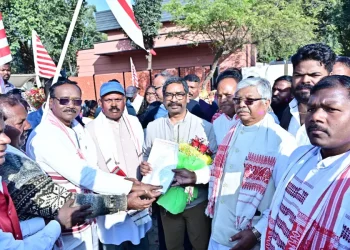Mandla/Balaghat
At the Kurkutti check post of Kanha Tiger Reserve, Bhawani Lal Yadav, who has been on duty in the forest department since the 1980s, pointed at labourers taking out weeds. The view to the famous Mukki gate of Kanha was breath-taking. Tall silvery-white Kans grass swayed in the gentle breeze.
But besides the scenic beauty what catches your attention are the bright-hued mud houses with their sloping double roofs.
“This unique housing structure makes it easy to make additional rooms for families in future if the need arises. The upper sloping portion called patan is used for storing millets and paddy,” Laxmi Maravi, a beat guard of Mukki range, informed The Indian Tribal. She explained that most houses built in this style across Kanha belong to the Gond tribals.
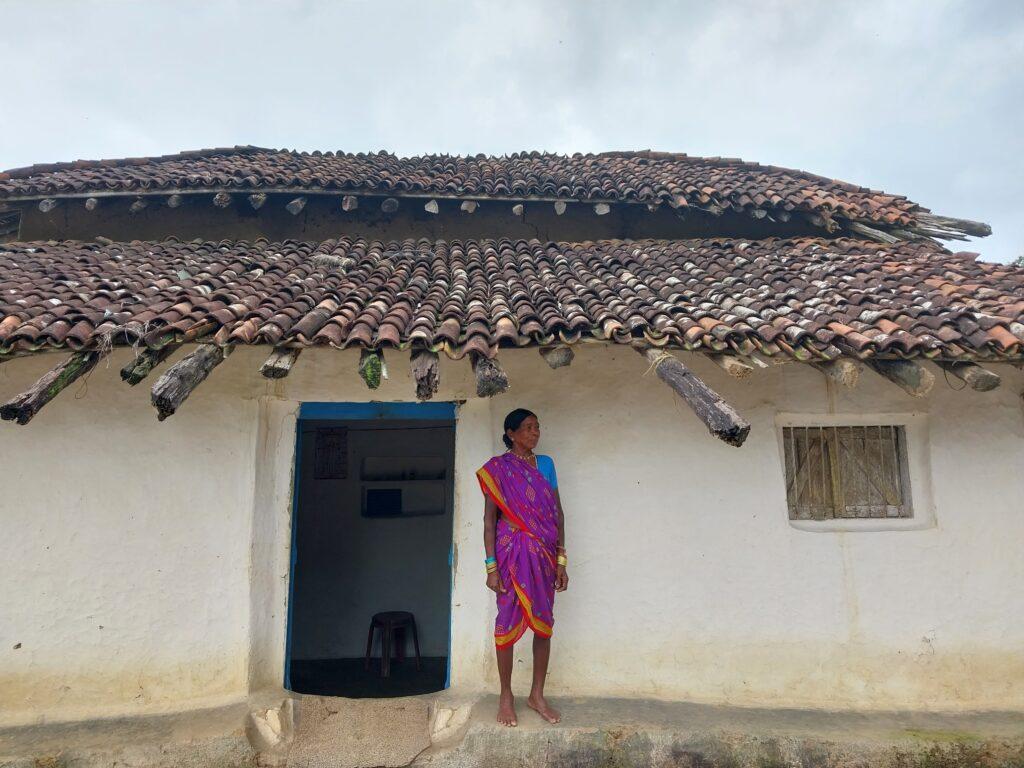
Sukli Bai Tekam, a Gond tribal woman, sheds some more light on the unique mud houses in Bamni village. “Every year we have to apply a fresh layer of cow dung to the mud walls. In many houses, the store room or patan is not there but still the sloping roof is created for ‘show’. When a store room is created above, the top height is further increased. If the height is less, then there is no patan,” she pointed out.
Sukli Bai, from the nearby Mowala village, was on a visit to her daughter’s house in Bamni village. She had come walking all the way covering a distance of five km as it was a fine day with clear skies.
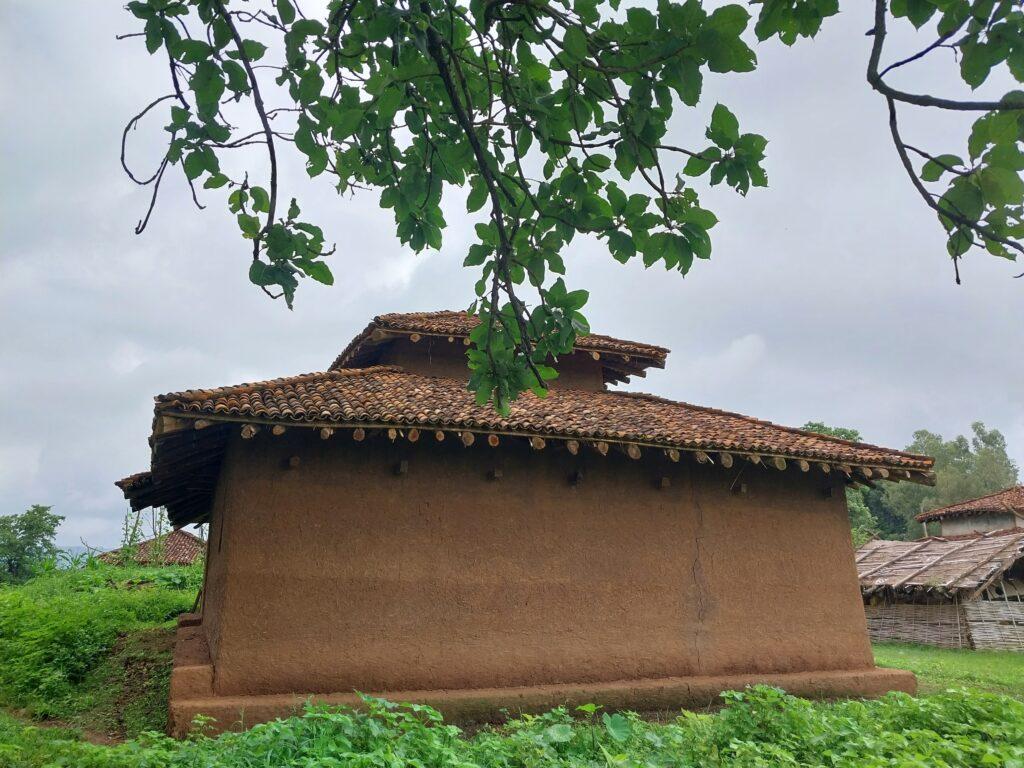
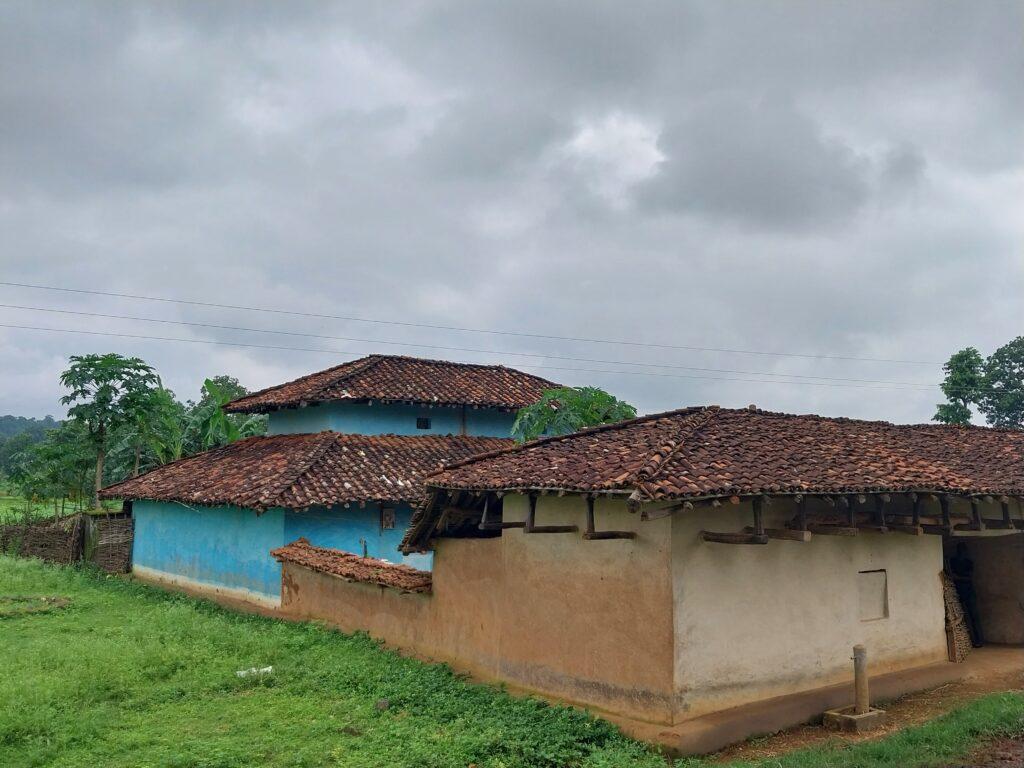
Sometimes to add greater strength, the mud walls have Kodo millet straw in them. They last for years. In summers, mud houses remain cool.
Sukli Bai said mud is often obtained from near the villages but the quality has to be excellent. In some places, a lime layer is applied with brush during Diwali. The mud houses are supported with long wooden beams called kari on the outsidewhich provide support and help in extending more rooms from all sides.
In Gudma village, Kundanlal Wasnik from the Mahar community, said the houses in Kanha have sloping structures as the region experiences heavy rains.
“The roofs have reddish khaprail tiles made with mud at homes. Every three to four years they have to be changed as they get damaged due to rains.”
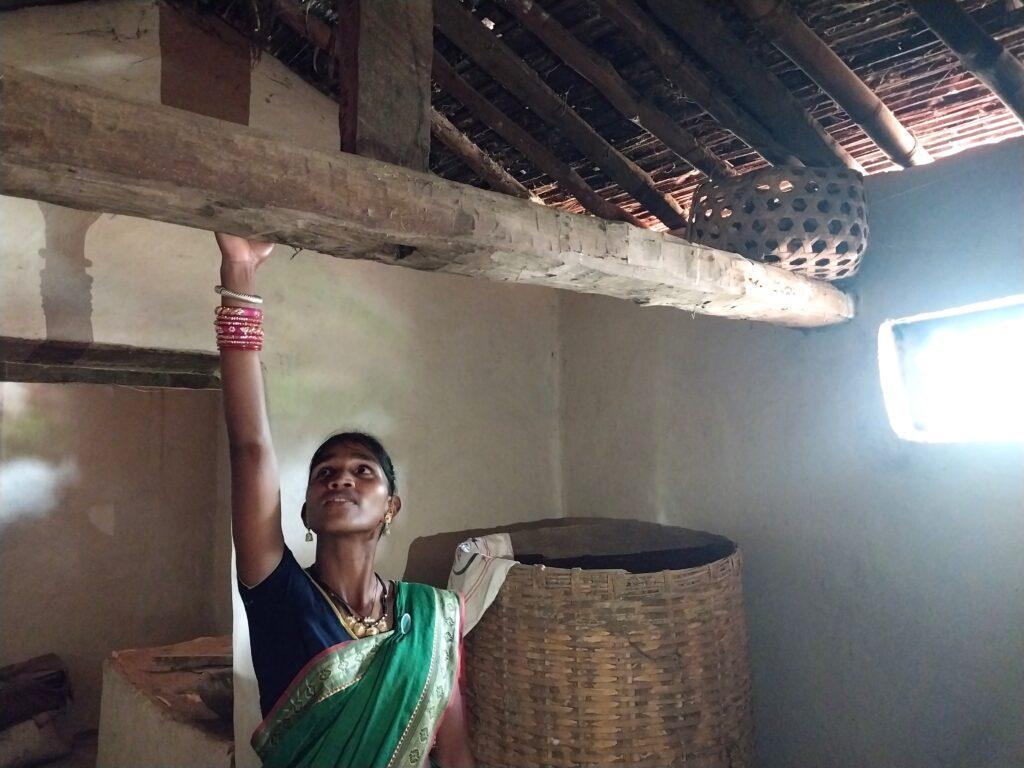
In Bandha Tola village, one house has unique housing structure with a beautiful and spacious store room where grain was stored. To reach the room, one has to use a staircase from inside the house, which is usually dark. The room’s roof is supported by strong wooden beams placed both horizontally and vertically. One rectangular container made of mud and locally called the ghorsi was sealed.
“It has 500 kg paddy,” said Saniyaro Tekam, a Baiga tribal, proudly.











